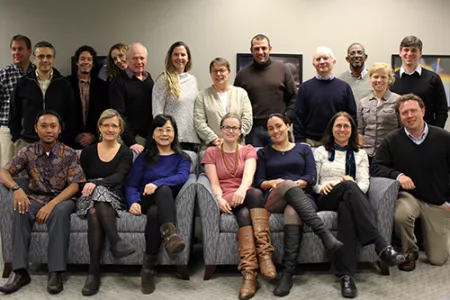Recently, a diverse group that included marine scientists, governance scholars, database developers, and management experts convened at SESYNC to address the question of under what conditions do designated marine protected areas (MPAs) improve the ecological and social conditions in coastal communities. Funded under SESYNC’s Ecosystem Services Theme, this project aims to document and explain the impacts of MPAs at local, regional, and global scales and to generate scientific insights that can be used to inform both academic research and marine policy deliberations.
SESYNC appealed to the project’s principal investigators, Dr. Helen Fox of the World Wildlife Fund and Dr. Robert Pomeroy of the University of Connecticut, as the right opportunity for their research proposal because of our transdisciplinary integration of social and natural approaches to environmental problem-solving. Participants in this group are all experts in their respective fields, but, as one participant commented, no one person can possibly know all available data in all fields—collaborative, integrated synthesis amongst scientists and practitioners from different disciplines can help fill knowledge niches and lead to meaningful, actionable results.
The participants’ varied backgrounds and perspectives meant that an important first step was to develop a cross-disciplinary understanding of their meeting, as well as overall research, goals. During the three-day gathering, the team coalesced around a common framework, shared vocabulary, and possible data sources and analytical approaches. They then identified the next steps to be undertaken by four interconnected, self-selected subgroups that formed in response to the broad tasks identified by the team.
We were excited to see this group make full use of our provided resources. They found our teleconferencing capabilities easy to use and were able to share screens, notes, and video with colleagues on the West Coast and in Europe. Small breakout groups frequently formed in our common area, then reconvened in plenary in our large conference room. One participant found the atmosphere of collegiality created by the physical space so appealing that he asked for the blueprints to inform a redesign at his home institution!
Our cyberinfrastructure resources will continue to support this team in accomplishing its goals between on-site meetings. The team is already making good use of the collaborative workspace and file share we provide to all groups. In addition, our IT staff is ready to support the complex data discovery and synthesis efforts of the project by advising on database design and providing remote access to our database and GIS servers.
We look forward to welcoming this group back to SESYNC for its second meeting later this year.
